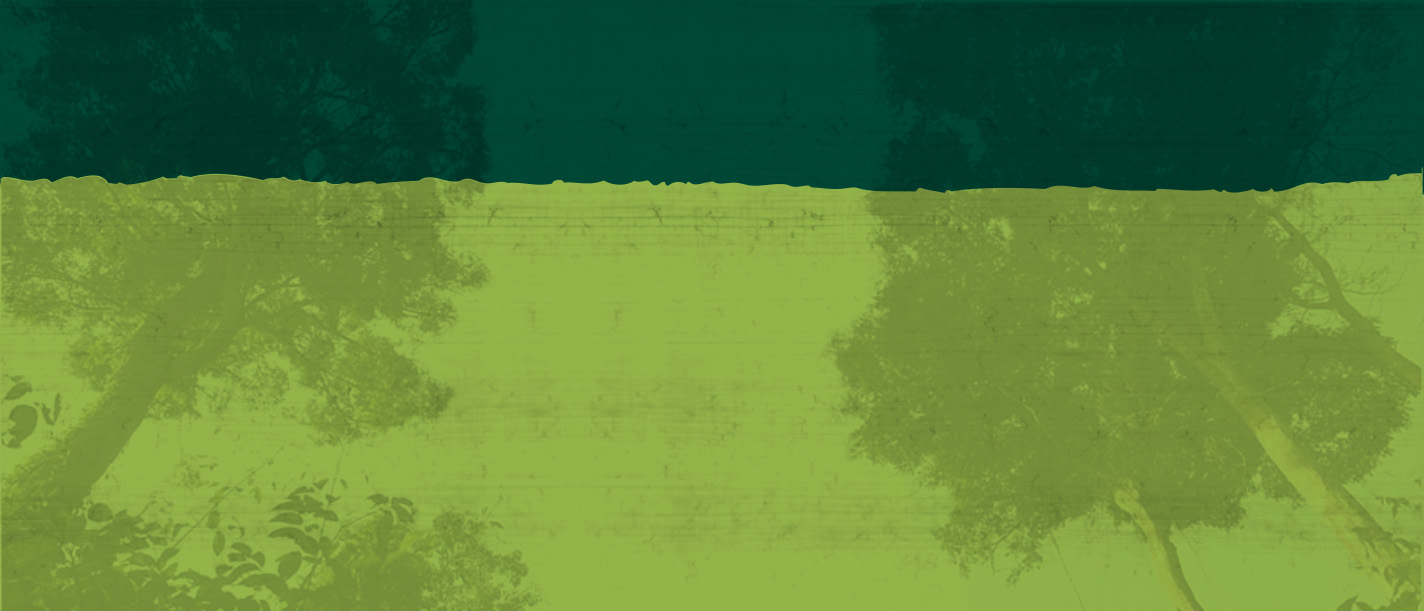News
Snares are major threat to juvenile chimps in Budongo
November 25, 2022
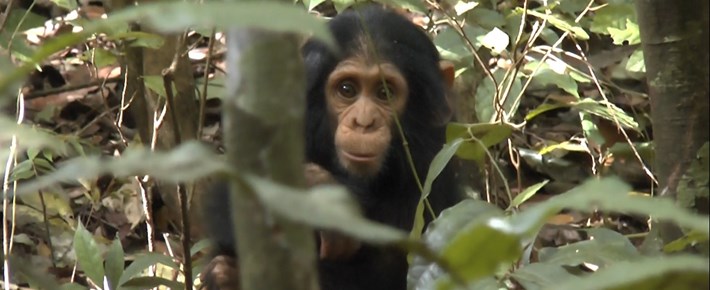
Poaching of wild animals has been one of the longest standing challenges to wildlife conservation. Here in Budongo, snares are a particularly common technique used by poachers to catch wild animals. Snares are noose-shaped traps, usually made from metal wire or nylon (see image below). Snares are hidden on the ground. Once an animal steps in a snare and pulls, the snare tightens, ultimately resulting in death. Poachers primarily lay snares with the aim of capturing animal species such as bushbucks for the purpose of either consumption or sale. Chimpanzees are seldom the target of snares, but unfortunately, they are commonly caught in them.
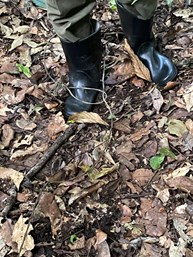
The foot of a Sonso primatologist caught in a wire snare
In the last 20 years, Budongo has seen almost 50 chimpanzees snared. Snare injuries mutilate chimpanzee limbs, leaving them with permanent disfigurements (see image below) that result in pain, disease, increased parasite load, decreased capacity for foraging, and often death. Among the chimpanzees of Budongo forest, the most common victims of snare injuries appear to be the juveniles.
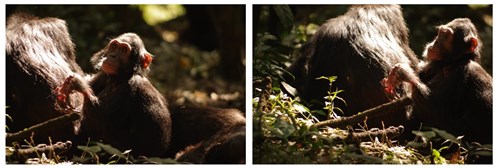
Kirabo, a recently snared juvenile chimpanzee of the Sonso community. Here, his rotting hand is shown, which was eventually lost entirely. Photograph taken by Caroline Fryns.
While juveniles represent just 10% of the population in Budongo, they make up 50% of those who fall victim to snares. By contrast, adults make up almost 90% of the population, but only 40% of those who fall victim to snares are adults. Juveniles are the future of our chimpanzee populations. Consequently, the disproportionate effect of snaring on juveniles represents an enormous threat to the future of the Budongo chimpanzees.
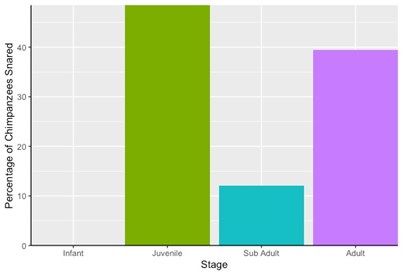
Bar chart showing the percentage of chimpanzees caught in snares at each stage of development
Why does it seem that juveniles are disproportionately affected by snares? Compared to adults, juveniles have usually had fewer opportunities to learn the danger of snares. Yet, juvenile chimpanzees are curious and playful creatures, spending much of their time ‘peering’ at objects and events around them, as well as playing with friends on the ground where poachers lay snares. Unfortunately, their curious and playful nature may also be contributing to their plight. Although infants are also yet to learn of the dangers of snares, infants spend almost all their time in direct contact with their mothers. Juveniles, by contrast, spend much more time being independent, playing and travelling by themselves or with other group members. The combination of high levels of curiosity and increasing independence in the absence of experience may make juveniles especially vulnerable to snares.
What can be done to prevent snaring in Budongo forest? Here in Budongo we have a team of ‘Eco-Guards’ who dedicate their time to searching for snares in the forest and removing them. Over the years, a wide variety of other initiatives have also been attempted, such as providing local reformed ex-poachers with alternative means of subsistence to reduce the poverty-induced need to hunt. The beneficiaries of these initiatives also provide man power during joint snare patrols with the BCFS Eco-guards increasing forest surveillance. While these initiatives have been met with moderate success, the number of snares within Budongo resurged during the Covid-19 pandemic, with 4 chimpanzees recently falling victim to the snares. All the victims were juveniles. The BCFS veterinary team successfully intervened and on two occasions the affected chimpanzees were relieved of the snares. Unfortunately, one of the victims eventually lost their fingers as a result of the snare injury. The field team continues to monitor the other two victims for an opportune time to successfully conduct snare removal interventions. The success of an intervention is often tied to the habituation level and character traits of the victim.
To meet the challenge of protecting and conserving the chimpanzees of Budongo, local children and researchers have begun to take the issue into their own hands, painting signs as shown below to raise awareness about the consequences of snares. We hope that through such ingenuity and enthusiasm for conservation, we will be able to secure the future of the Budongo chimpanzees.
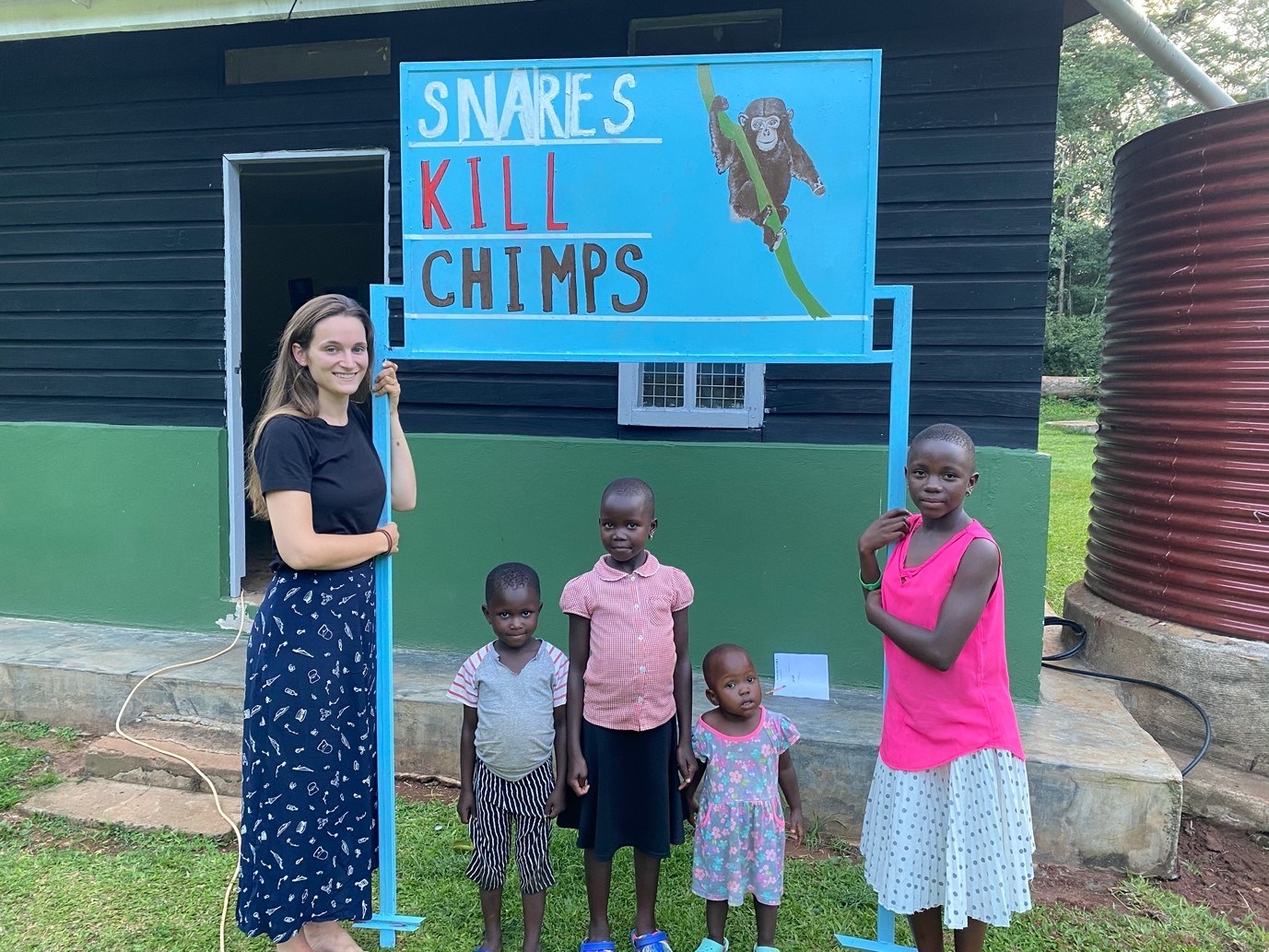
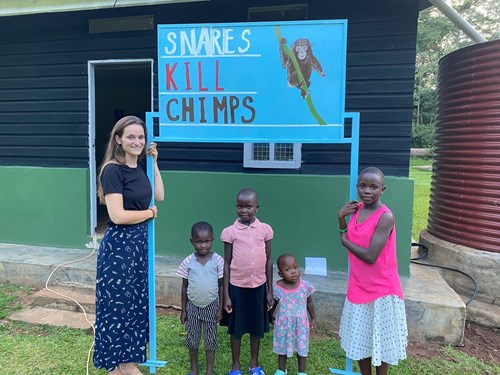
Elodie Freymann, Immaculate Tryphine, Justine Anjua, Natasha Aikoru, and Patience Lucky (left to right) standing proudly by their hand-painted sign warning poachers about the consequences of their actions.
Article by Derry Taylor
A Post-doctoral researcher within the Institute of Biology at the University of Neuchâtel. Derry is currently conducting research focusing on human-chimpanzee relationships at Budongo Conservation Field Station.
Latest Articles
-
Launch of the “Budongo: Livestock for Conservation” Pilot Project
October 21, 2025
-
Revitalizing ornithology research at BCFS
November 30, 2024
-
Perspectives Collective Journal Launch
February 21, 2024
-
Albino infant chimpanzee sighted in Sonso
September 07, 2021
